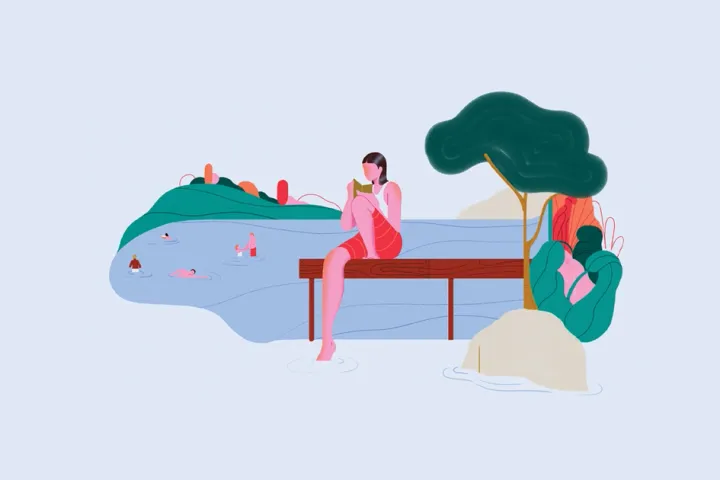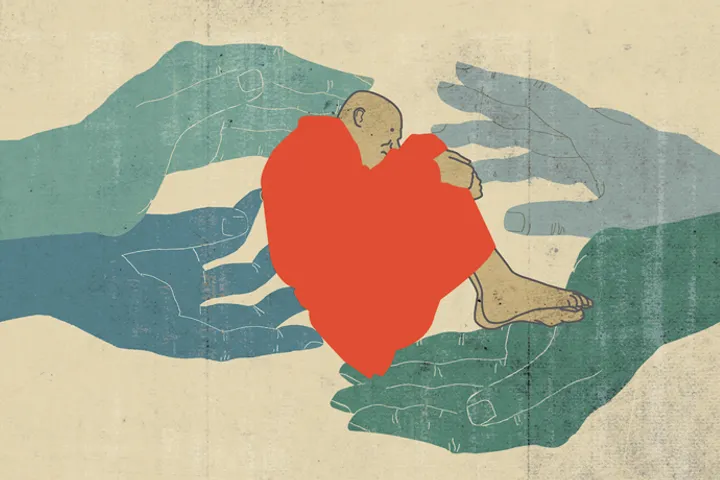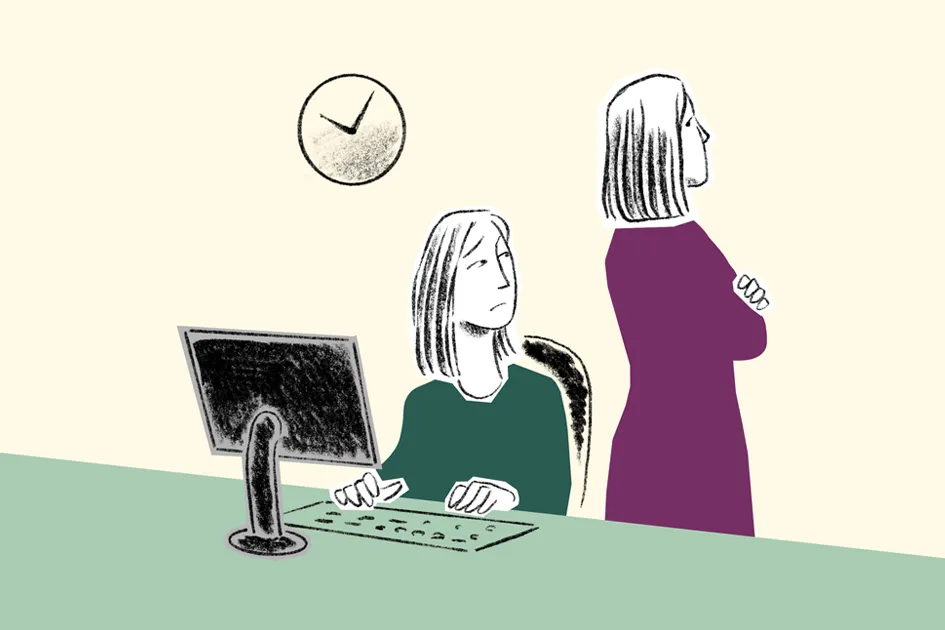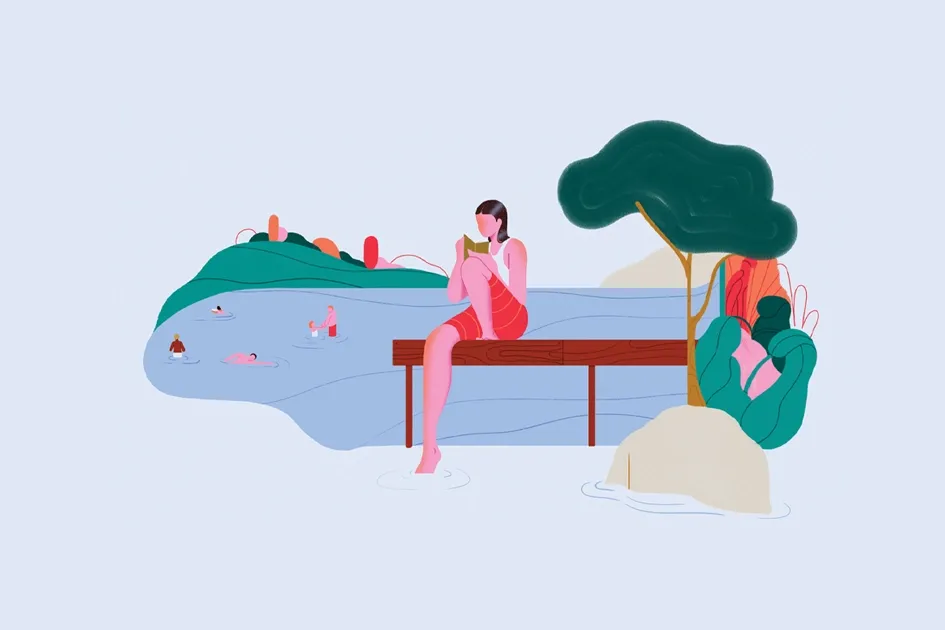When my suitcase didn’t arrive at O’Hare’s international baggage return, I panicked, then waylaid the nearest agent and told her, “You must find that bag!” As she calmly explained United Airline’s procedure for tracking lost luggage, I kept thinking of my precious cargo. I wanted to tell her about Jim, a 22-year-old patient at a hospital in Papua New Guinea. I wanted to tell her that he might be dying from leukemia and that my son was his doctor. I was carrying Jim’s bone marrow biopsy in three medically sealed plastic tubes for further testing in the United States. I wanted to tell her that it would take months and extra pain for Jim to redo and resend a biopsy. But the words wouldn’t come. I just said, “Please, find my bag.”
I was carrying Jim’s bone marrow biopsy in three medically sealed plastic tubes for further testing.
In November 2017, my son Matt, his wife Tammy, and their two small children moved to Papua New Guinea (PNG) to join a team of eight physicians at Kudjip Nazarene Hospital. Nestled in a valley in the Western Highlands, Kudjip sits on land where two noble but violent tribes, the Kuma and the Sigang, once used to maim and hack each other to death with machetes. Now this quiet, peaceful land bursts with lemons, bananas, papaya, mangoes, and guava, while Kudjip provides Christ-centered medical care for thousands of abjectly poor patients from neighboring villages.
Jim grew up nearby in the lush mountainous Highlands region that remained unknown to “Western civilization” until the mid-20th century. Jim’s great-grandfather had two wives, engaged in frequent tribal wars, and practiced animism—a religion committed to spirit and ancestor worship. In the 1950s and ’60s, the good news of Jesus entered the Highlands. Jim’s grandfather became a Christian, then an ordained pastor. Today, Jim’s dad works for a cellphone company while also faithfully serving on his church’s board. At a young age, Jim put his faith in Christ, finished secondary school, and seemed destined for a long and fruitful life.
In February of 2018, Jim visited Kudjip for a lingering cough. Matt first met him in the B Ward’s central waiting area, a small room always crammed with patients in need. My son ordered a chest X-ray, prescribed an antibiotic, prayed with his patient, and assumed that he would recover quickly. Jim appreciated Matt’s expertise and genuine concern. Matt respected Jim’s cheerful attitude and sincere faith in Christ. Jim loved giving the hospital staff his broad smile and a hearty thumbs-up, his hopeful signs that through Christ, everything would be okay. A friendship had begun between these young men, neither of them aware of the approaching storm.

When I visited Kudjip in May 2018, I met Jim and his dad (also named Jim) while tagging along with my son on his walk-in appointments. Eyes sparkling with delight to meet an American father, Jim-the-dad pumped my hand and flashed a typical PNG smile—so wide, generous, and warm. Then the four of us crammed into Matt’s tiny exam room, our knees and shoulders almost touching each other’s. At 5 foot 11 and 190 pounds, young Jim, a recreational rugby player, looked robust by PNG standards. I immediately bonded with the two men. After all, I have three sons. And two years before, my youngest son, about Jim’s age at the time, suffered a brutal knee injury followed by surgery and a life-threatening infection.
Jim never mentioned what doctors call “subjective complaints,” like “my arm hurts” or “I feel tired.” Instead, he kept saying, “I feel fine” or “Yeah, I’m good.” But Matt quickly noticed the “objective findings” —the pale skin and tongue, suggesting anemia, and the blood work revealing pancytopenia (severely low white blood cells and platelets). Matt told Jim and his father, “We don’t know what’s wrong here, but we will do our best to find out. We will take a sample from your bone marrow and have it tested in the United States.” Honoring PNG culture, Matt asked his elder (me) to pray. So the four of us bowed our heads, and in simple English I asked God to heal Jim and comfort his family, especially his dad. When we looked up at each other, our eyes glistened with optimism.
After returning to Chicago, I mailed out the bone marrow samples that eventually arrived with my lost luggage. In late June, Matt told me the good news: Jim didn’t have leukemia. The bad news was that Jim’s health worsened, and he now had a disturbing new symptom—pericardial effusion, fluid around the heart, often caused by tuberculosis, a common disease in PNG. After Matt treated him and prayed with him, Jim insisted on going home.
In early July, Jim came to the hospital again. The left side of his face drooped with Bell’s palsy. Another ultrasound revealed hydronephrosis (swelling of the kidneys), renal failure, and a strange mass in the liver. Matt and his mentor, Dr. Bill McCoy—a 32-year veteran of missionary medicine in the developing world—often quietly huddled in a corner of the B Ward to discuss Jim’s strange cluster of symptoms. Bill, also mystified, sent the ultrasounds, a list of symptoms, and the record of treatment to a friend at the Mayo Clinic, who then discussed it with an entire team of physicians. But even they couldn’t offer a definitive diagnosis.

On day three of this hospital stay, the paralysis struck the other side of Jim’s face. On day five, his renal failure worsened. Bill and Matt gathered to pray with about 20 members of Jim’s family. Speaking in the native pidgin, Bill prayed, “Putim em insait long han bilong yu” (We are giving him to you, Lord). Family members nodded their heads as they quietly added “Yes, Lord” and “Amen, God.” Shortly after the prayer, Jim’s family realized the matter was now completely in God’s hands, so they brought him home. Two days later, he died.
During our weekly calls throughout June and early July, Matt and I had seldom discussed Jim’s condition. We focused on Matt’s family and our busy schedules doctoring and pastoring. I assumed Jim was getting better. So when Matt texted to tell me about his death, at first the news didn’t sink in. I had to read those two words again—“Jim died.” I’d thought he would make it. I thought of his father standing by his side, tenderness etched on his face, the two sets of fathers and sons crowded into Matt’s office, talking softly, our eyes locked on each other’s, feeling helpless but hopeful. I thought of my youngest son lying on a hospital bed two years before, fighting a deadly infection. My son had survived. But Jim, the bright young man who loved Jesus and the church, the rugby player from the Jimi Valley, the son of a devoted father, had not. I put down my phone, sat on my couch, and wept.
The doctors at Kudjip frequently witness medical miracles, like Kuka, a motionless little girl who came to the hospital with a devastating head injury. Matt told me that most American neurosurgeons would have transported Kuka by helicopter to be treated by a pediatric neurosurgeon with state-of-the-art equipment. But two young non-specialist surgeons at Kudjip, without a CT scan to guide their work, used a sterilized power drill and lots of prayer to cut holes on each side of Kuka’s skull. Seven days later she walked away from her hospital bed a normal, happy girl.
Miracles can reignite faith, but deaths can break you. During his first month in PNG, Matt treated a 4-year-old boy with Pig Bel, an abdominal infection that develops in central PNG when malnourished children eat a large protein-rich meal. Matt helped place an IV on the child and ordered antibiotics and fluids, but in less than an hour, an experienced Kudjip doctor informed Matt that the boy had gone into cardiac arrest and died. In shock Matt blurted out, “What? How did he just die?” The doctor quietly said, “It happens a lot here.”

A mentor of mine often asks these searching questions: Can you know the world and still love it? Can you look at the world’s sadness, brokenness, and injustice and still care, engage, and hope? Obviously, the sadness strikes far-off places like PNG. But it breaks people like us, too, surrounded by our blinking, shiny, superior cars and laptops and medical machines. We all groan and weep and try not to lose hope.
Can you know the world and still love it?
I wrote Dr. Bill and asked, “After 32 years, how do you see so much suffering and death and still care, still hope?” He replied, “If I were to count the cost of waging war on suffering and death, and my ledger were the sum total of my gifts, strengths, courage, and all my resources, death wins by a landslide. But this is not my fight, not my war. Death and suffering spit and fume, but they won’t have the last word. Jesus faced and defeated death so He gets the last word: ‘Behold, I make all things new.’”
Can you know the world and still love it? Sometimes it hurts too much. Disease and death and grief can crush you.
But then I remember Jim’s broad smile and confident thumbs-up. I remember Dr. Bill’s simple pidgin prayer. I remember those 20 family members with their fervent “Yes, Lord.” I remember the Christian doctors at Kudjip who daily walk into that overflowing hospital waiting room. Most of all, I remember Jesus, sharing in our flesh and blood (Hebrews 2:14), bearing our sins in His body on the tree (1 Peter 2:24), giving us a living hope through His resurrection (1 Peter 1:3). Then, and only then, can my answer be “Yes.”
Collage by MLC





